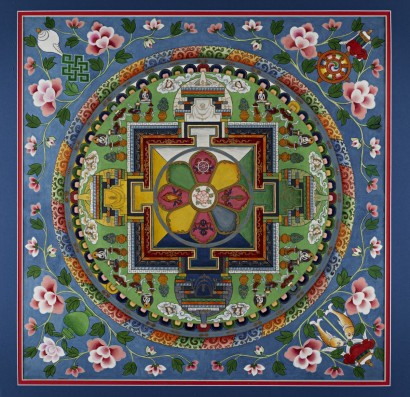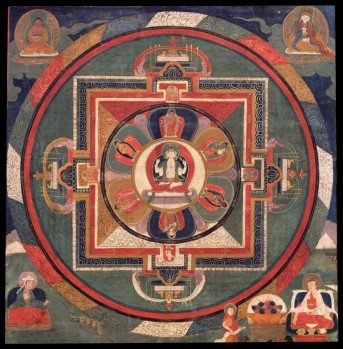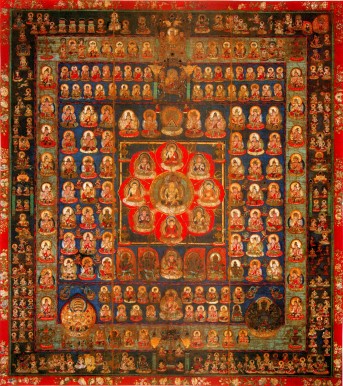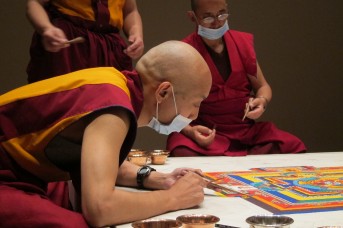India, Dharamsala, September 1991; painting on cloth; image: 22 3/4 x 22 3/4 in., framed: 29 3/4 x 29 1/2 in.; Jacques Marchais Museum of Tibetan Art, 92.11.1025.
The mandala seen here is a concrete form of spiritual practice. It also operates as a map on multiple levels. The design depicted emulates the floor plan of a palace, while simultaneously representing a map of the cosmos. Furthermore, it is used as a map for inner reflection; the practitioner sees its intricate patterns as an expression of the singularity—and yet interconnectedness—of all things. This particular mandala, commissioned to honor the Dalai Lama’s visit to the Jacques Marchais Museum, shows Avalokiteshvara’s palace. This expresses the idea that the Dalai Lama is an extension of the bodhisattva’s compassion. At the center of the four-gated palace is a lotus flower, symbolizing Avalokiteshvara, or Chenrezig, as he is known in Tibet. BO







